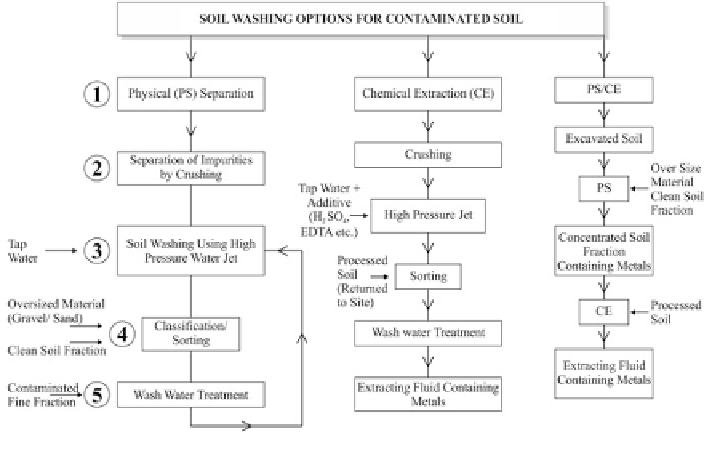Environmental Engineering Reference
In-Depth Information
Fig. 17.1
Schematic diagram of soil washing
experience with such technique has demonstrated that they create new problems,
e.g., increase in mobility (and bioavailable) of the remaining metals in the
decontaminated substratum, redistribution of pollution to other remaining fractions
of the process (resins, sludges, etc.) (Woelders
1998
; Dermont et al.
2008
)
(Fig.
17.1
).
17.3.4 Soil Flushing
This is in situ innovative remediation technology in which water is used with or
without additives as flushing solutions to solubilize contaminants in soil to an area
where they can be removed, with various methods of infiltration, such as infil-
tration basins, injection wells, and an infiltration trench. Various additives include
organic or inorganic acids, sodium hydroxide, which can dissolve organic soil
matter, water soluble solvents such as methanol, displacement of toxic cations with
nontoxic cations, complexing agents such as EDTA, acids in combination with
complexing agents or oxidizing/reducing agents. Once the water is pumped from
soil, it must be extracted and then treated to remove the metals in wastewater
treatment facilities or reused in the flushing process (Fig.
17.2
). Significant removal
of chromium was achieved. Levels of chromium were reduced to 18 from
2,000 mg/l (USEPA
1996
). Urlings (
1990
) decrease the Cd content 90 % of the
soil from 10 to less than 1 mg/kg with dilute hydrochloric acid (pH 3). Since

Search WWH ::

Custom Search